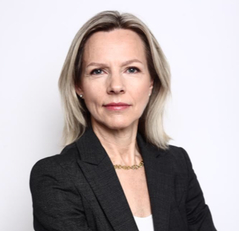Three Fund Selectors looking to make an Impact

16 SEPT, 2020
By Constanza Ramos

This Tuesday, September 15th, RankiaPro had the pleasure of hosting its second Conference Call with Selectors, where we were joined by Susanne Bolin Gärtner from Danske Bank, Anders Bertramsen from Nordea, and Arnaud Bergeot from ABN Amro, to discuss the investment trend of the year, ESG. Across the asset management industry, the terms Impact investing, ESG investing and Sustainable investing have been used often and interchangeably, highlighting the importance of the theme integration, if not a united stance on terminology.

Our three guests represented the markets at the forefront of this paradigm-shifting investment strategy, with Susanne and Anders representing the Nordics, respectively based in Stockholm and Copenhagen, and with Arnaud representing the French market in Paris. As fund selectors, we asked them to each present two funds on their radar that have successfully integrated sustainability criteria into their fund management process.
Our three guests did not disappoint in relaying their perception of where the fund industry currently stands on sustainability measures, and where there is still work to be done.
Continue reading below to see the funds they chose, and why.
The evolution of an ESG standard
When asked on the evolution of ESG standardization within the investment industry, Anders beautifully summarized the consensus opinion that there will never be a true industry-wide standard due to the qualitative nature of ESG criteria, saying:
The fundamental selection work of interviewing investment teams and understanding if sustainability is at the core of their thesis is an inherently qualitative process. Anders added “It’s actually beautiful for guys like us that there is a lack of standard, because it means we have an important job to do.”

Susanne Bolin Gärtner, Head of Fund and Manager Selection at Danske Bank

At Danske Bank, where Susanne leads the fund selection team and manages the offer of both in-house white-label funds, and external funds. This mix is essential, she says, because of the differing client needs even within Nordic countries, with Swedish clients requiring a wide array of external funds, whereas the Danish market is often satisfied with a mostly in-house offer.
Susanne added that when it comes to a sustainable fund offering, she takes a complete view of their offering at Danske, believing that investors should not have to choose specific funds that are characterized as sustainable, and instead select to invest in a bank knowing that the whole offer will be, on some level, sustainable.
The two ESG funds highlighted by Susanne:
Anders Bertramsen, Head of External Products at Nordea AM

Anders leads a large team of 24 experts on external fund selection, where they focus on white-label funds and third-party fund research within the equity, fixed income and alternative asset classes. He also oversees two teams who focus on private credit and private equity FoF investments.
His team at Nordea began looking into ESG criteria in manager selection about 4 years ago, and have since developed and implemented a proprietary rating model that was inspired by the UN PRI rating, transitioning from a framework they previously employed, which used a letter designation when comparing fund managers according to how much ESG his team fundamentally believed each manager was conducting, and which Anders described as subjective, varied, and lacking a clear framework. Their new framework, based on a comprehensive and expansive questionnaire that is sent out to mangers, looks into a wide array of subcomponents such as policies, investment procedures, monitoring, exclusions and engagements.
Although this new framework standardizes their approach, Anders admitted that it still has a level of subjectivity and ultimately it comes down to developing a personal relationship with managers to better understand their management process.
The two fixed income funds Anders highlighted are:
Arnaud Bergeot, Analyst on US Equities Strategies at ABM AMRO

Arnaud focused his discussion on the ESG regulation environment, and how changes in the coming months will impact the fund landscape in Europe. The launch of the European Union Sustainable Disclosure Regulation Project, with the aim of issuing a regulation applicable at the European Union level and which will hope to harmonize the ESG disclosure standards across the countries.
Through this new regulation and the resulting fund classification method, Arnaud explained that there should be additional transparency provided to fund selectors like himself, and for their clients, who research managers and their respective funds, due to marketing and reporting requirements, for example, put in place through this regulation.
The two ESG fund strategies presented by Arnaud are:


